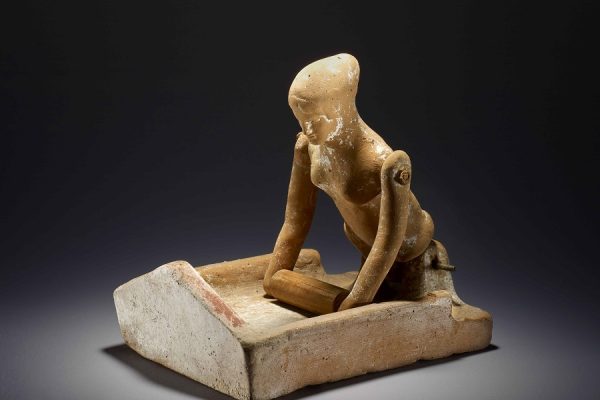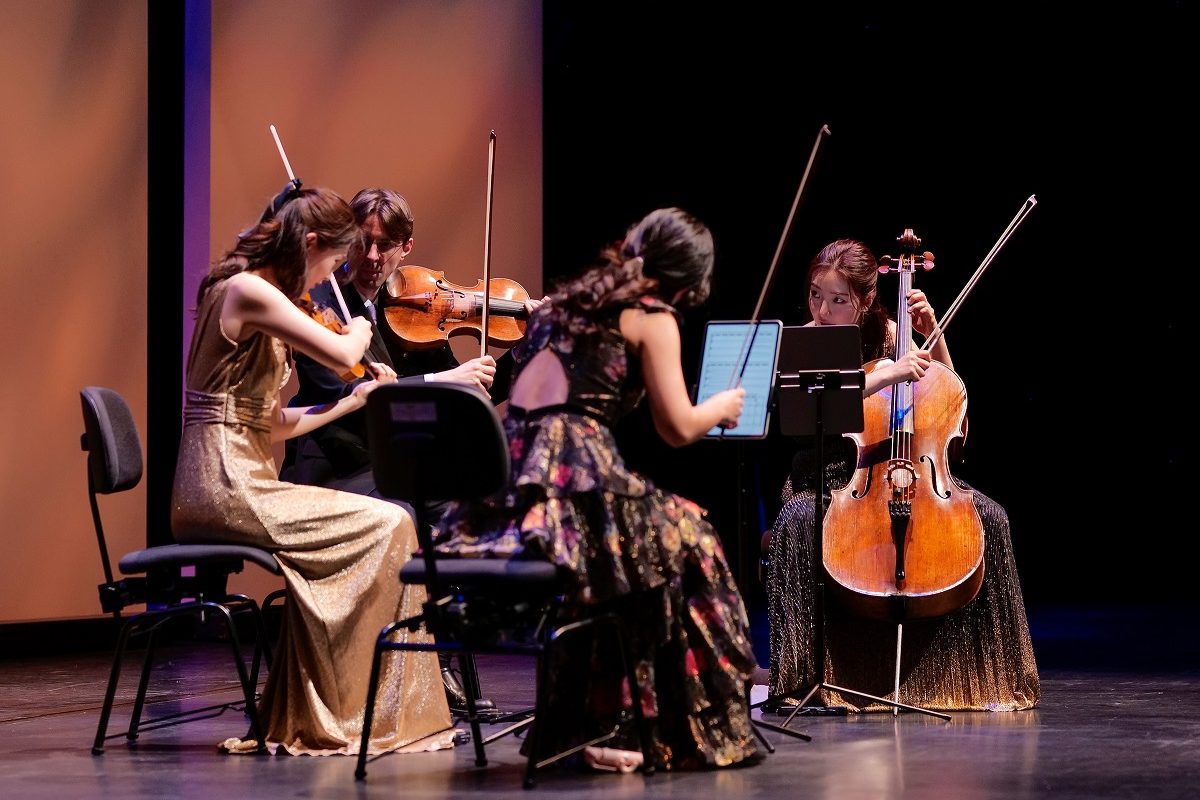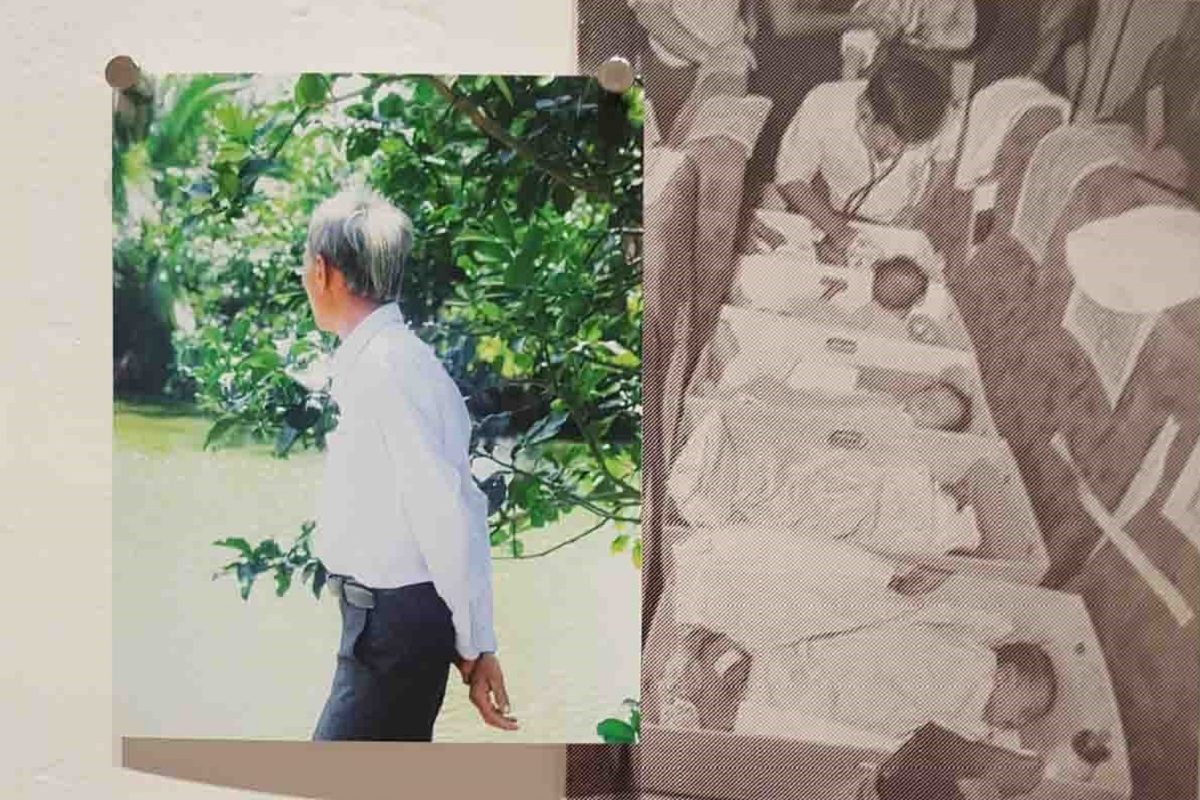
“Ancient Greeks: Athletes, Warriors and Heroes”, National Museum of Australia, until May 1. Reviewed by MEREDITH HINCHLIFFE.
THIS is the fourth exhibition to be shown at the National Museum of Australia, and organised in collaboration with the British Museum
In many ways the title says it all: I found it very masculine: competition, war and winners.
But there are many small treasures, and it is worth seeking them out.
The exhibition is divided into sections: Nike, Goddess of Victory; Sporting Competitions; The Performing Arts; War, Heroes and Myths; Society: Competition in Life and Death.
As could be expected there are many pieces of black-figure and red-figure pottery. A helpful chart gives information about the numerous forms on display. Most have been carefully restored – unsurprising as many were made up to 500 years BCE ago. They will have survived earthquakes, wars, deliberate and accidental breakages, in addition to the the general wear and tear of life.

A tall, black figure pottery Hydria – a water jar – is nearly 50 centimetres high. The jar shows women at a fountain house, perhaps in conversation while they collect water, or taking part in a religious ritual in which water is poured into sacred chasms. This vessel was made in Athens, Greece in about 510 BCE, and found in Italy. Men show their presence on the shoulder of the work, with dogs chasing around the base.
A much smaller work is a moving model of a woman rolling dough, in terracotta. This was made around 450 BCE in Rhodes, Greece. Poorer women had to work, even if they were also looking after their children. I find this model, which appears to be quite intact, poignant. Why would someone make a model of a woman undertaking her domestic chores? Perhaps it was a toy. Other small models depict a boy butchering a pig, a cheese seller, and a group of a woman carrying a baby. The woman has a lined face, which contrasts with the fresh appearance of the baby. She may represent different classes or be an example of the beginning and end of life. Owning slaves was a sign of social prestige, although poorer households sometimes included a slave.
A statue of a woman, carved from Parian marble, about 150-100 BCE is 166.5 cm high is in remarkable condition. The textures carved into the marble evoke fine and expensive fabrics. The folds are sharp, her hands and head are covered. Two smaller statuettes of women in terracotta were made around 250-200 BCE and represent women from the upper classes. Their clothes are also made from expensive fabrics. The figures were manufactured using moulds and finished in different colours and decoration. Most of these figures came from graves but were also found in homes and sanctuaries.
There are some beautiful pieces of jewellery on exhibit. An intricate and delicate necklace made from terracotta, silver and gold was made in 300 – 100 BCE and found in Spain. The head of a female is in the centre with acorns and leaves as pendants. Terracotta was gilded, so that it looked as though it were gold. A gold wreath is in the Performing Arts section, and curators suspect it may have been worn before it was put in the wearer’s grave.

A votive relief, carved from marble, from around 330 – 300 BCE, depicts two youths on horseback. While horses in life were generally kept by the aristocracy due to their expense, in art they symbolised power and prestige and were common motifs on funerary and dedicatory sculptures. These two young men are wearing tunics, indicating they may have been knights or the twin sons of Zeus. The reins bear traces of red paint, like many of the works in marble and clay.
We can learn much from carefully viewing and reading this exhibition. Greek culture has endured, not only in the arts but in architecture and medical and technical terms. The very informative catalogue includes a clear image of each work on exhibit, and several essays.
The exhibition has been shown at the WA Museum and will travel to the Tāmaki Paenga Hira Auckland War Memorial Museum once it closes in Canberra.
Who can be trusted?
In a world of spin and confusion, there’s never been a more important time to support independent journalism in Canberra.
If you trust our work online and want to enforce the power of independent voices, I invite you to make a small contribution.
Every dollar of support is invested back into our journalism to help keep citynews.com.au strong and free.
Thank you,
Ian Meikle, editor




Leave a Reply